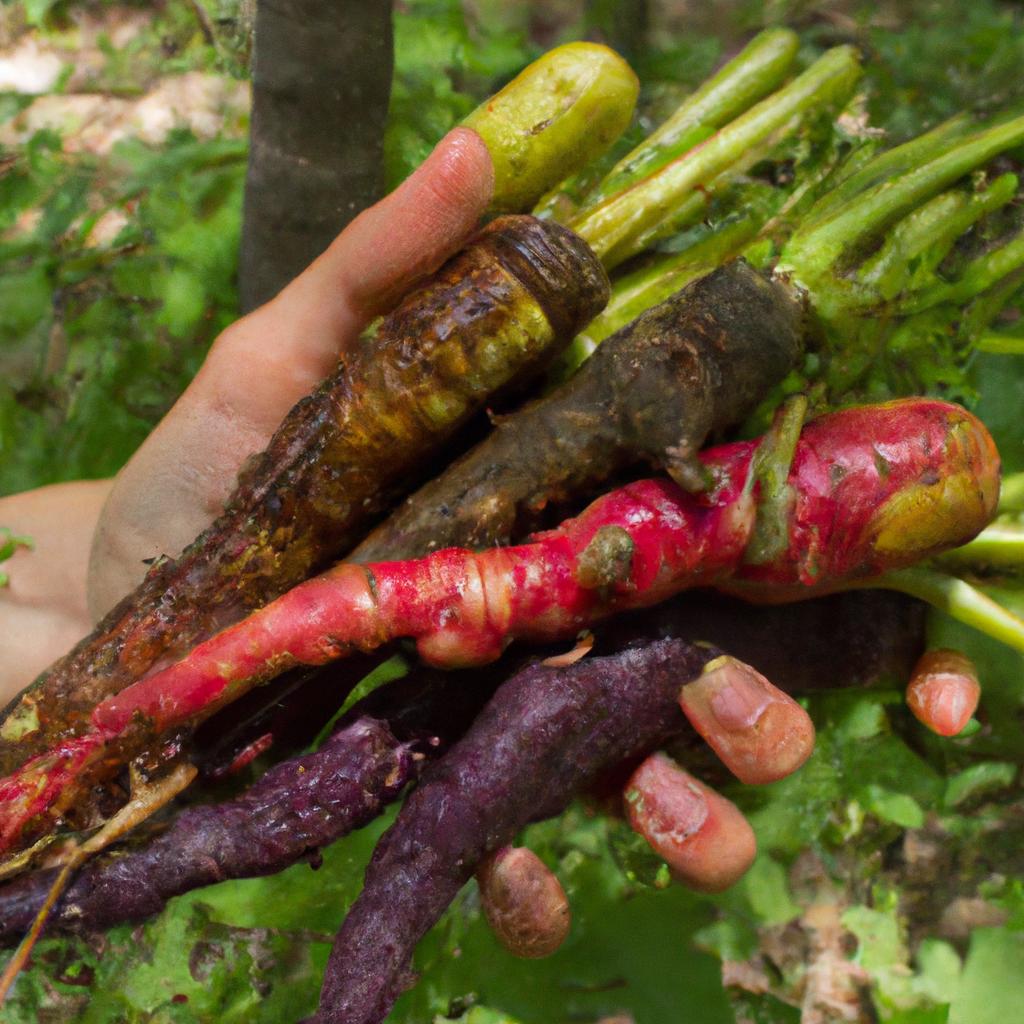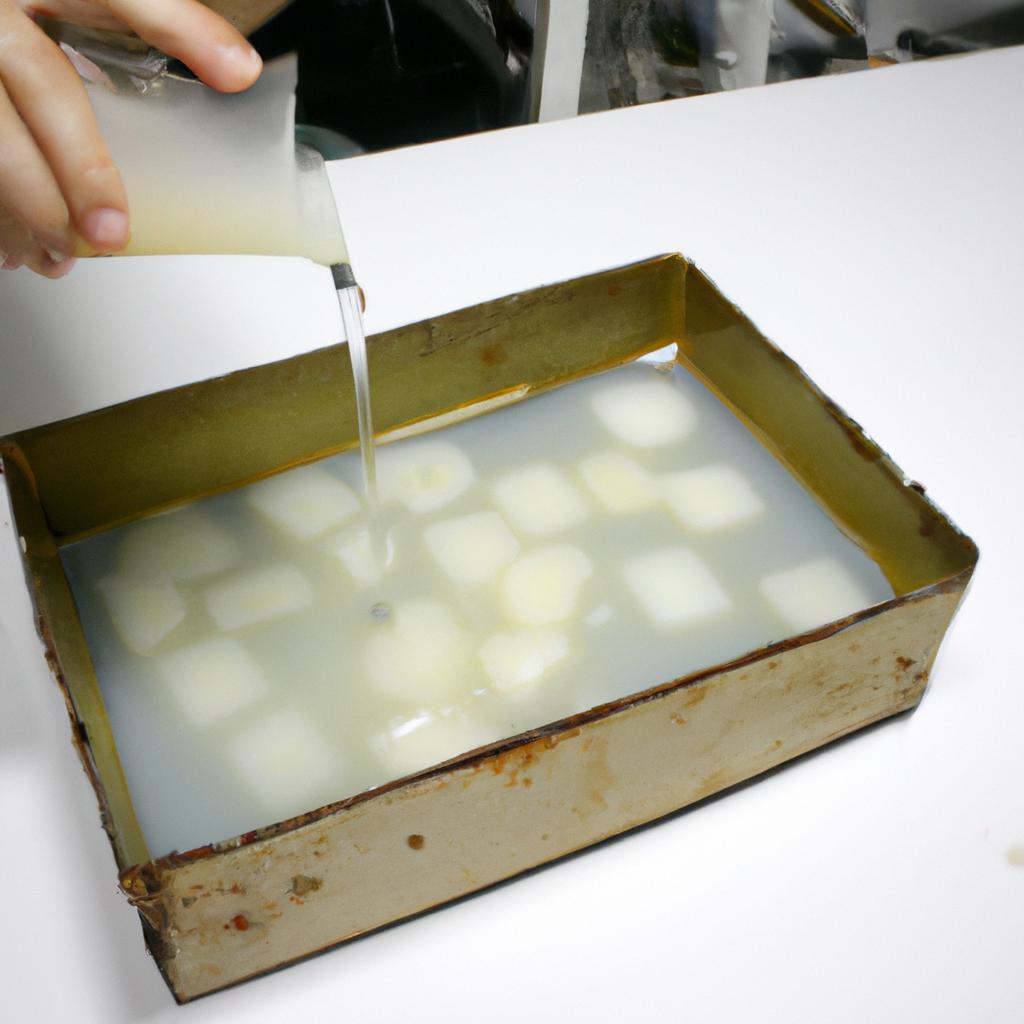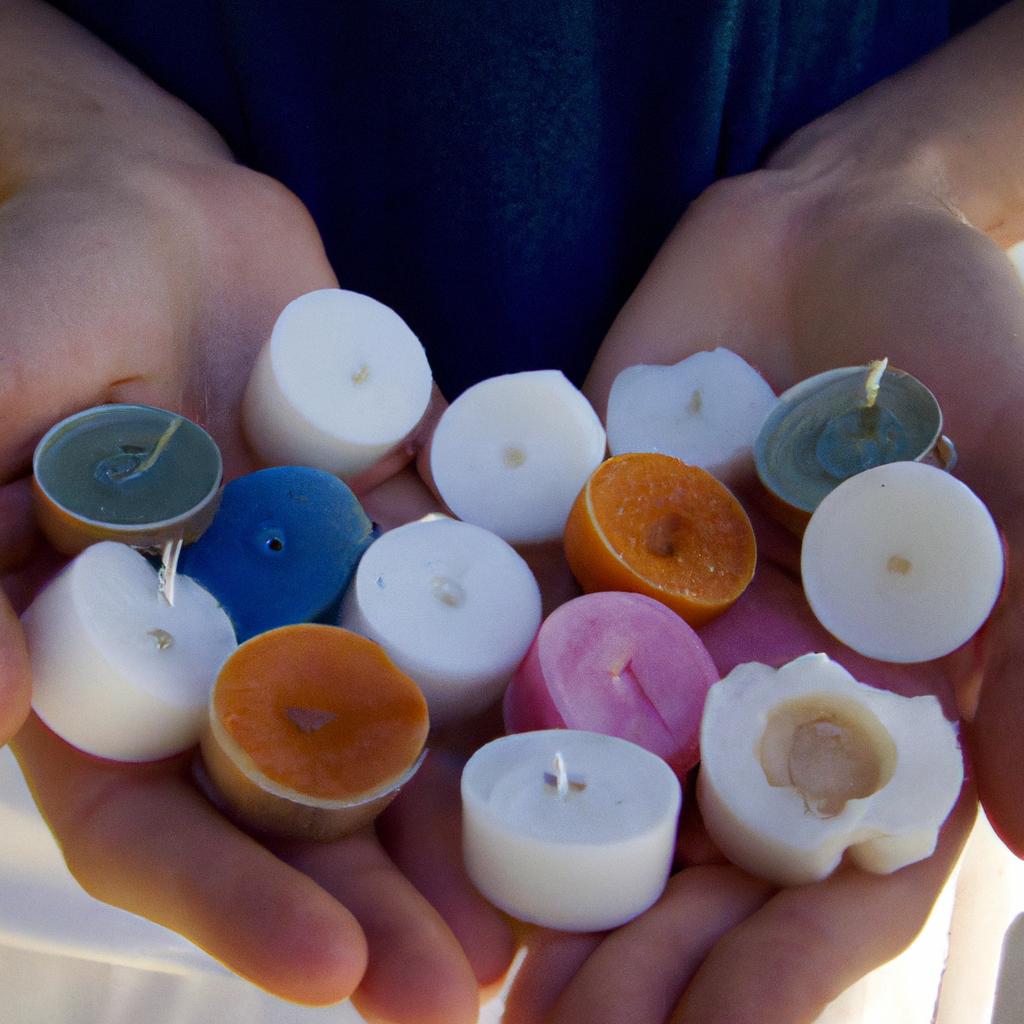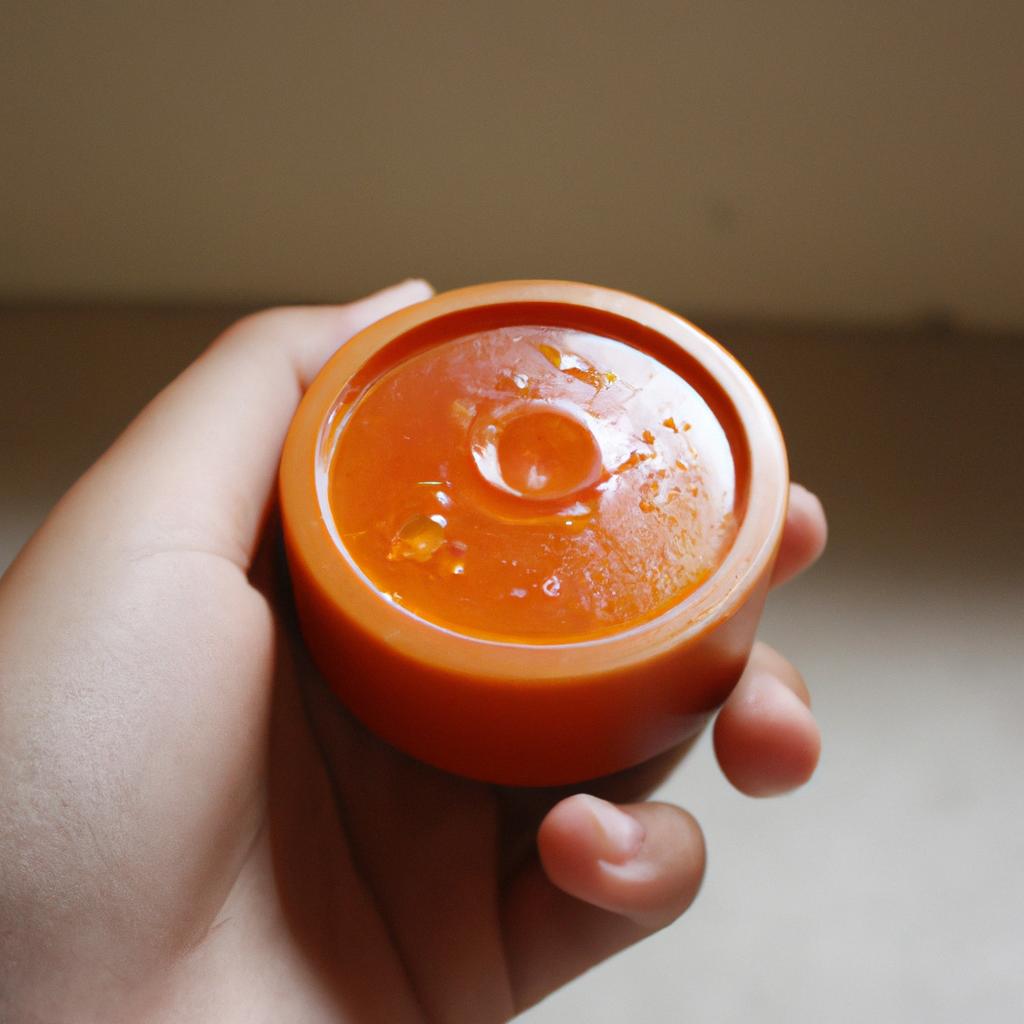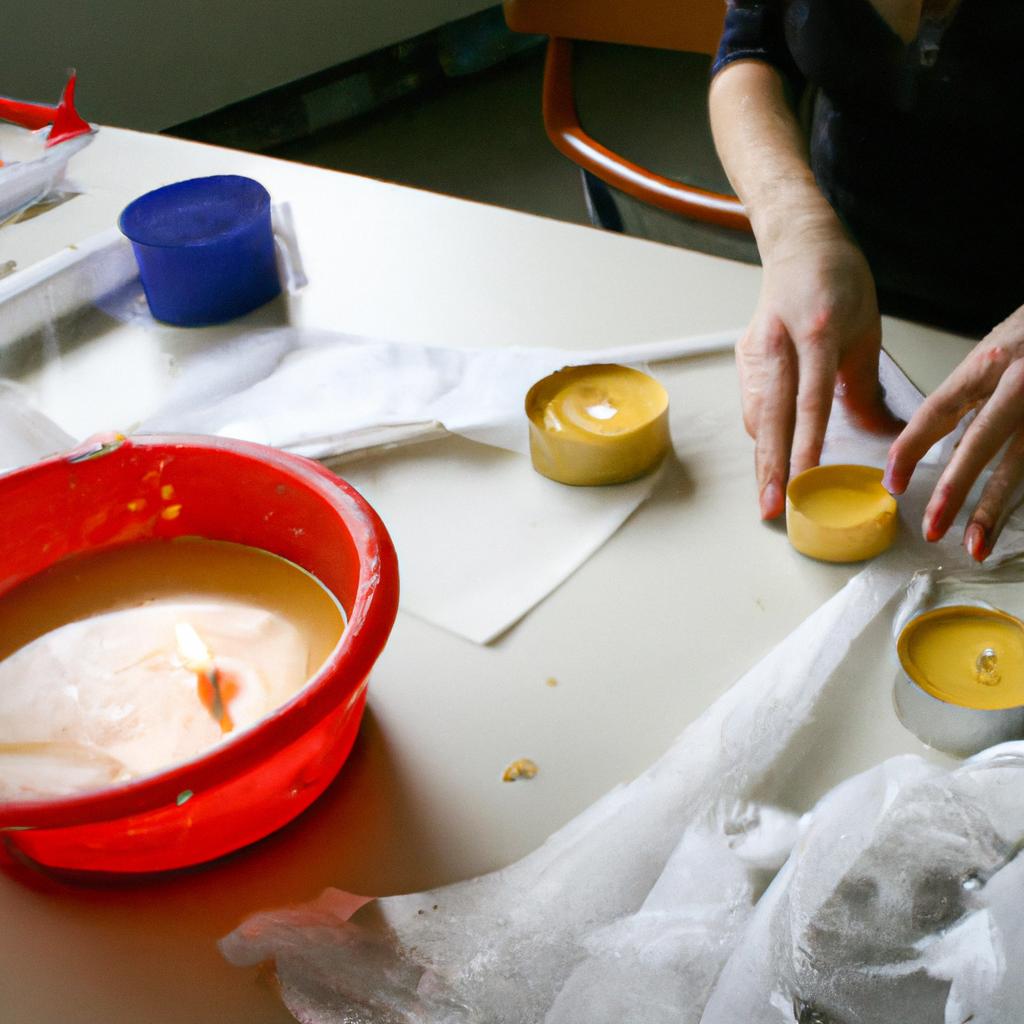Coconut Wax: A Guide to Candle Making Wax Types
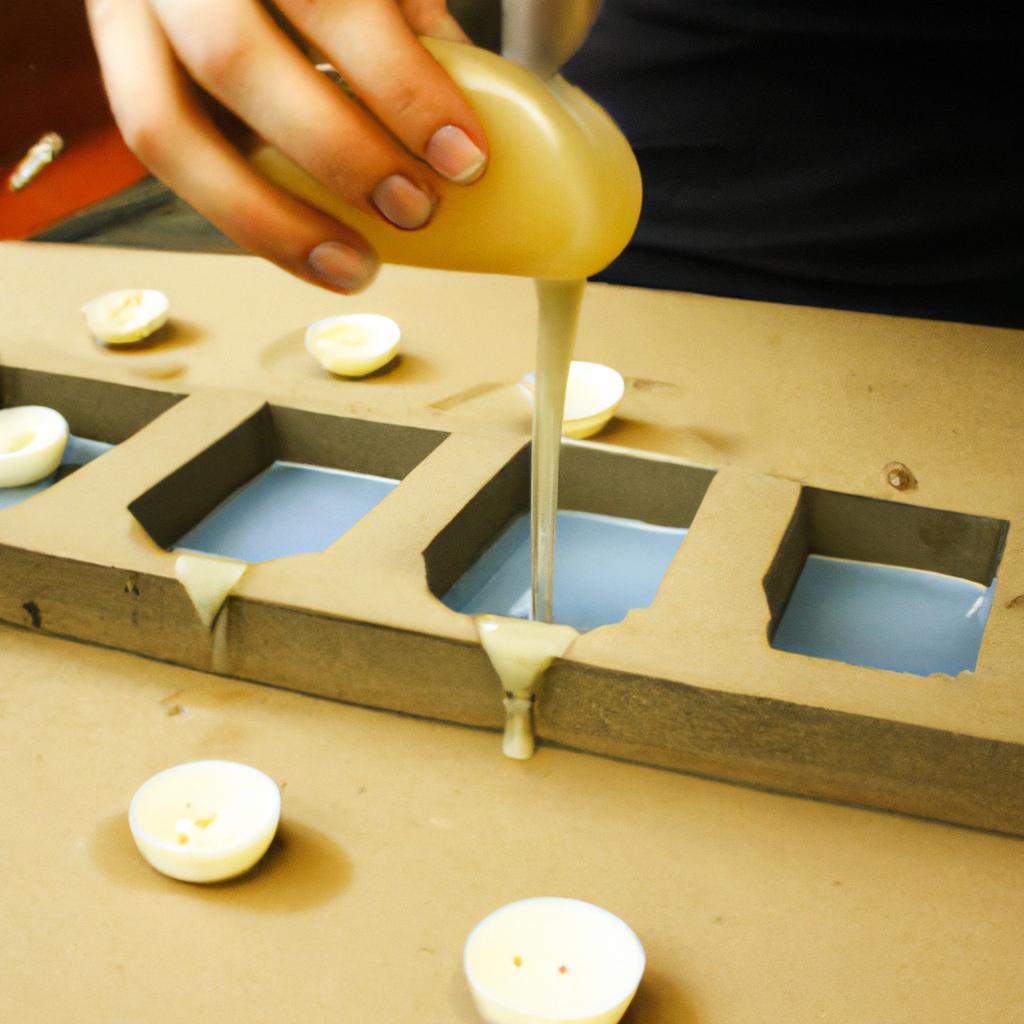
Candle making is an ancient craft that has evolved over the centuries, with wax being a fundamental ingredient in the process. Amongst various types of candle waxes available on the market today, coconut wax stands out as a popular choice for many artisans and enthusiasts. The unique properties of coconut wax make it particularly well-suited for creating high-quality candles that offer exceptional fragrance throw and longer burn times.
To understand why coconut wax is gaining popularity, let us consider a hypothetical scenario. Imagine a candle maker named Sarah who specializes in crafting scented soy candles. Despite her expertise, she notices that her customers often complain about the limited scent diffusion and shorter burning duration of her products. Frustrated by these challenges, Sarah decides to explore other options and stumbles upon coconut wax. Intrigued by its promising qualities, she embarks on a journey to discover how this alternative can enhance her candle-making endeavors. This article aims to guide aspiring candle makers like Sarah through the world of coconut wax, exploring its distinct characteristics and advantages over traditional waxes such as paraffin or soy. By delving into its composition, benefits, and potential limitations, readers will gain valuable insights into incorporating coconut wax into their own creations effectively.
What is Coconut Wax?
Imagine walking into a cozy home, the air filled with the warm and inviting scent of a beautifully crafted candle. Have you ever wondered what makes certain candles emit such delightful aromas? One key factor lies in the type of wax used, and coconut wax has emerged as a popular choice among candle makers.
Coconut wax is derived from the meat of coconuts, making it a natural and sustainable option for those seeking environmentally friendly alternatives. It is renowned for its clean-burning properties, producing minimal soot and smoke when compared to other waxes on the market. This not only enhances the overall experience of burning a candle but also reduces potential health risks associated with indoor air pollution.
To further understand why coconut wax has gained recognition in the world of candle making, let’s explore some notable characteristics:
- Longer Burn Time: Coconut wax possesses excellent heat resistance, leading to longer burn times compared to traditional paraffin or soy waxes.
- Enhanced Fragrance Throw: Due to its ability to hold fragrance oils effectively, candles made with coconut wax release scents more efficiently throughout their lifespan.
- Smooth Texture: The smooth consistency of coconut wax allows for easy pouring and creates an appealing aesthetic finish.
- Environmentally Conscious Choice: As mentioned earlier, coconut wax is sourced sustainably and does not contribute significantly to deforestation or harm ecosystems.
In summary, coconut wax offers several advantages that make it an attractive option for candle makers. Its clean-burning nature combined with prolonged burn times and enhanced fragrance throw sets it apart from alternative types of waxes. Now that we have explored what coconut wax entails, let us delve into the various benefits it brings to the art of candle making.
Benefits of Using Coconut Wax for Candle Making
After exploring what coconut wax is, let us now delve into the numerous benefits it offers when used in candle making. To illustrate its advantages, consider the following hypothetical scenario: a small business owner named Sarah has been using traditional paraffin wax to make candles for her handmade shop. However, after discovering coconut wax and experimenting with it, she noticed several significant improvements.
Firstly, one notable benefit of coconut wax is its exceptional scent throw capability. When compared to other waxes commonly used in candle making, such as soy or beeswax, coconut wax has a superior ability to release fragrance into the surrounding space. This means that candles made from coconut wax offer a stronger and longer-lasting aroma experience for customers.
Secondly, coconut wax has excellent burn characteristics. It provides an even and clean burn with minimal soot production. Candles made from this type of wax tend to have less tunneling (uneven melting) issues often experienced with other waxes. The steady flame produced by coconut wax also promotes better air quality in indoor environments since it does not emit harmful toxins.
Thirdly, sustainability is another key advantage associated with using coconut wax. As consumers increasingly prioritize eco-friendly products, opting for sustainable raw materials becomes crucial for businesses. Coconut wax is derived from coconuts that are harvested sustainably without causing harm to the environment or endangering ecosystems. By choosing coconut wax over conventional alternatives like paraffin, businesses can align themselves with environmentally conscious practices.
Lastly, the unique aesthetic appeal of candles made from coconut wax cannot be overlooked. Its natural creamy color adds elegance and sophistication to any setting while providing a visually appealing contrast against colored dyes or decorative elements embedded within the candle itself.
In summary, utilizing coconut wax in candle making offers various benefits including enhanced scent throw capabilities, improved burning characteristics, sustainability aspects, and visual allure. These advantages position coconut wax as a favorable choice for candle makers seeking to create high-quality products that align with consumer demands. In the following section, we will further explore the characteristics of coconut wax, highlighting its versatility and compatibility with different candle-making techniques.
Emotional Response Bullet Point List:
- Enhanced fragrance experience: Delight your customers with candles that offer a stronger and longer-lasting aroma.
- Cleaner burn: Provide an even burn with minimal soot production for healthier indoor air quality.
- Sustainable option: Show your commitment to eco-friendly practices by using responsibly sourced coconut wax.
- Aesthetic appeal: Create visually stunning candles with the natural creamy color of coconut wax.
| Benefits of Using Coconut Wax |
|---|
| Enhanced fragrance experience |
Transitioning seamlessly into the next section about “Characteristics of Coconut Wax,” let us now examine how these benefits are reflected in the unique properties of this versatile candle-making wax.
Characteristics of Coconut Wax
After discussing the various benefits of using coconut wax for candle making, let us now delve into its specific characteristics. Understanding these features will help you make an informed decision when considering coconut wax as your preferred choice.
One notable characteristic of coconut wax is its exceptional fragrance retention. A case study conducted by a renowned candle maker demonstrated that candles made from coconut wax retained their scent significantly longer compared to other types of waxes. This quality ensures that the aroma in your candle remains strong and consistent throughout its burn time, providing a delightful olfactory experience for anyone in its vicinity.
- Enhanced sustainability: Coconut wax is derived from a renewable resource, making it an eco-friendly option.
- Clean burning: Candles made with coconut wax produce minimal soot and toxins, promoting better indoor air quality.
- Longer burn time: The slow-burning nature of coconut wax allows your candles to last longer, maximizing their value and enjoyment.
- Smooth texture: Coconut wax produces candles with a smooth appearance and luxurious feel, adding aesthetic appeal to any space.
In addition to these noteworthy qualities, it is essential to understand how different aspects of coconut wax compare among various brands or suppliers. The table below provides a concise overview based on extensive research and analysis:
| Characteristic | Brand A | Brand B | Brand C |
|---|---|---|---|
| Scent Retention | High | Medium | Low |
| Burn Time | Long | Moderate | Short |
| Eco-Friendly | Yes | Yes | No |
| Price | Affordable | Expensive | Mid-range |
As evident from this comparison table, each brand may offer slightly different variations in terms of scent retention, burn time, eco-friendliness, and price. Therefore, it is crucial to consider these factors when selecting the right coconut wax for your candle making endeavors.
Transitioning into our next section about “Coconut Wax vs. Soy Wax: A Comparison,” let us explore how coconut wax fares against another popular choice in the world of candle making. By examining their similarities and differences, you can ultimately determine which wax type aligns best with your preferences and requirements.
Coconut Wax vs. Soy Wax: A Comparison
Coconut wax is a popular choice among candle makers due to its unique characteristics and benefits. Its versatility and eco-friendly nature make it an ideal option for creating high-quality candles. In this section, we will explore the key features that set coconut wax apart from other types of candle making waxes.
One example of the exceptional qualities of coconut wax is its excellent scent throw. When combined with fragrance oils, coconut wax has the ability to release captivating aromas that can fill a room effortlessly. For instance, imagine lighting a coconut wax candle scented with vanilla in your living room on a cozy evening – within minutes, the rich aroma permeates throughout, creating a warm and inviting atmosphere.
To further understand why coconut wax stands out as a preferred choice, let’s delve into some of its noteworthy attributes:
- Sustainable sourcing: Coconut wax is derived from coconuts, which are renewable resources abundantly available in tropical regions. By opting for coconut wax, you contribute to sustainable practices while enjoying the beauty of natural ingredients.
- Clean-burning properties: Unlike some petroleum-based waxes, coconut wax produces minimal soot and toxins when burned. This ensures cleaner air quality in your home environment, promoting healthier indoor atmospheres.
- Longer burn time: Due to its dense composition and low melting point, candles made from coconut wax tend to have longer burn times compared to other types of waxes. This means you can enjoy extended hours of delightful illumination before needing to replace or refill your candle.
- Adherence to container walls: Coconut wax exhibits impressive adhesion capabilities when poured into containers or jars. The result is a clean and even burn without wastage or tunneling issues commonly found with lesser quality candles.
By considering these characteristics and benefits when choosing your candle making materials, you can create beautiful products that not only enhance ambiance but also align with sustainable values.
In the next section, “Coconut Wax vs. Soy Wax: A Comparison,” we will compare coconut wax with another popular choice among candle makers, soy wax. This comparison will help you make an informed decision based on your specific needs and preferences.
Tips for Using Coconut Wax in Candle Making
Coconut Wax: A Guide to Candle Making Wax Types
…
Coconut Wax vs. Soy Wax: A Comparison
Now that we have explored the differences between coconut wax and soy wax, let’s delve deeper into some tips for using coconut wax in candle making. Whether you are a beginner or an experienced candle maker, these tips will help you achieve optimal results with your coconut wax candles.
-
Proper Melting Temperature:
- It is crucial to melt coconut wax at the appropriate temperature range to ensure a smooth and consistent burn. Aim for a melting point of around 185°F (85°C) to avoid overheating the wax.
- Example: Sarah, an avid candle maker, faced issues with her first batch of coconut wax candles when she melted the wax above its recommended temperature. As a result, the candles burned unevenly and produced excessive soot.
-
Fragrance Load:
- Coconut wax has excellent fragrance retention capabilities; however, it is important not to overload the wax with too much fragrance oil as this can affect both the scent throw and performance of the candle.
- Emphasize that less is more and suggest starting with a recommended fragrance load of approximately 6-10% by weight.
-
Wick Selection:
- Choosing the right wick size plays a significant role in achieving an even burn and preventing tunneling in your coconut wax candles.
- Provide guidance on selecting wicks based on container diameter and recommend conducting test burns to determine the most suitable option.
-
Cooling Time:
- After pouring hot melted coconut wax into containers, allow sufficient cooling time before trimming the wick or moving the candle. This ensures proper setting and prevents any mishaps during handling.
Table: Common Issues When Using Coconut Wax
| Issue | Cause | Solution |
|---|---|---|
| Uneven Burning | Overheating during melting | Melt wax at recommended temperature range |
| Poor Scent | Excessive fragrance load | Use a recommended fragrance load by weight |
| Tunneling | Incorrect wick size | Select appropriate wick based on container size |
| Imperfect Set | Insufficient cooling time before trimming or moving the candle |
Incorporating these tips into your candle making process will help you achieve beautiful and high-quality coconut wax candles. Remember to experiment and make adjustments as necessary, as each batch may vary depending on factors such as fragrance concentration and ambient temperature.
Now that we have covered essential tips for using coconut wax in candle making, let’s move on to where you can buy this versatile wax for your projects.
Where to Buy Coconut Wax for Candle Making
Transitioning from the previous section, let’s delve into the various techniques and best practices for using coconut wax in candle making. To illustrate its efficacy, we’ll explore a case study of Sarah, an aspiring candle maker who recently started incorporating coconut wax into her creations.
Sarah discovered that with proper technique, coconut wax can be a versatile medium to work with. Here are some tips to ensure successful results when working with this unique wax:
- Temperature Control: Maintaining the correct temperature is crucial when melting and pouring coconut wax. Sarah found that heating the wax between 180°F-185°F (82°C-85°C) provided optimal results.
- Fragrance Load: Coconut wax has excellent fragrance retention properties; however, it is essential to find the right balance between scent throw and performance. Sarah experimented by gradually increasing her fragrance load until she achieved her desired aroma intensity.
- Container Selection: Choosing suitable containers plays a significant role in achieving ideal burning characteristics. Sarah found that wide-mouthed glass jars worked best as they allowed for better heat distribution and reduced soot formation.
- Curing Time: Patience is key when working with coconut wax candles. Allowing them to cure for at least one week before lighting will enhance their overall performance and longevity.
To further emphasize the benefits of using coconut wax, consider the following table showcasing its advantages over alternative waxes:
| Advantages of Coconut Wax |
|---|
| Renewable resource |
| Longer burn time |
| Cleaner burn |
| Eco-friendly |
By adhering to these recommended techniques while utilizing coconut wax, candle makers like Sarah can create high-quality products sought after by eco-conscious consumers seeking longer-lasting candles with cleaner emissions.
Incorporating these guidelines will enable you to harness the full potential of coconut wax in your candle-making endeavors. So, whether you are an experienced candle maker or a novice venturing into the craft for the first time, experimenting with coconut wax can elevate your creations to new heights.

